How to protect yourself against malware and phishing websites
open allWhat for: To protect yourself from online threats.
Firefox has protection against phishing, malware and riskware activated by default. When you open a page, the browser checks it against a list of untrusted websites. If a threat is confirmed, the user will be blocked from browsing the website. The same thing happens when you download an unsafe object or a file by an unknown developer. Check the settings and make sure all protection features are enabled.
- Click the button with three parallel lines on it in the top right corner of the screen;
- Select Settings;
- Go to Privacy & Security in the menu on the left;
- Scroll down to Deceptive Content and Dangerous Software Protection and check these boxes:
- Block dangerous and deceptive content;
- Block dangerous downloads;
- Warn you about unwanted and uncommon software.
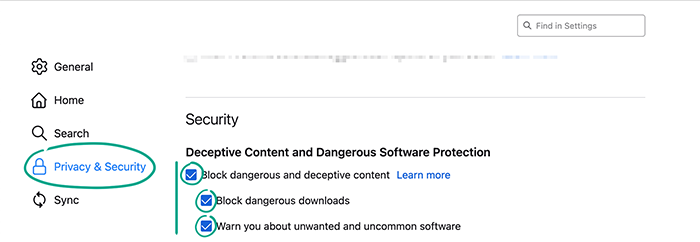
What for: To keep your protection up to date.
By default, Firefox automatically checks for updates and installs these immediately upon availability — even if you are not using the browser. Developers consistently add new features and fix vulnerabilities, so it is important to use the latest version of the app. Make sure you have automatic update installation enabled on your smartphone (and in the background, too).
- Click the button with three parallel lines on it in the top right corner of the screen;
- Select Settings;
- In the General section, scroll down to Firefox Updates;
- Turn on Automatically install updates (recommended) and Use a background service to install updates features.
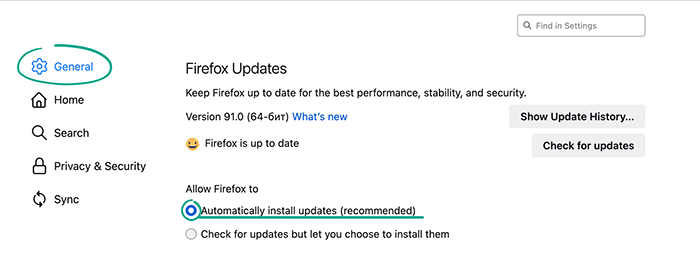
How to hide your data from prying eyes
open allWhat for: To leave no tracks.
Firefox normally stores data about the pages you open, the passwords you enter and other browser usage information. If you want to hide that information and when using someone else's device, you can switch to private browsing:
- Click the button with three parallel lines on it in the top right corner of the screen;
- Click New private window.
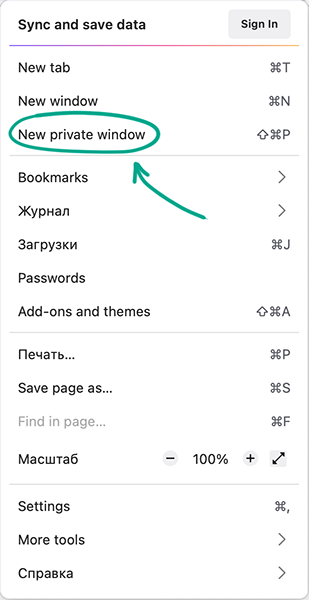
Keep in mind that private browsing only applies to data stored by the browser itself. Your Internet service provider or your employer (in case you are connected to an enterprise network) will be able to see what pages you have visited.
How to keep corporations out of your business
open allWhat for: To find a balance between privacy and comfort.
Website owners and advertising companies are eager to gather as much information about you as possible. To do this, they use various tracking tools, such as:
- Social media trackers — snippets of code that social networks post on their own and third-party websites. For example, Facebook might embed this type of code in the "share" button on a news portal to find out what websites you visit and track your interests.
- Cookies — small objects containing information about your system and page settings that the website saves on your device.
- Fingerprinters — scripts that record information about your browser and device, such as the screen resolution, system language, installed extensions and other settings.
- Other tracking elements — code snippets embedded in website content, such as banners, buttons, video players and other page elements.
Using the collected data, various companies create a unique profile of your device to remember your website settings and serve up targeted advertising.
Firefox blocks some of these scripts by default and prevents browser-based cryptominers — malicious objects that attackers use to make money at the expense of your device's resources without your permission — from running.
You can turn on a stricter protection mode to further thwart surveillance or customize the protection to meet your needs.
- Click the button with three parallel lines on it in the top right corner of the screen;
- Select Settings;
- Go to Privacy & Security in the menu on the left;
- Under Enhanced Tracking Protection, select the level that suits you:
- Standard. Firefox will block social media trackers, cross-website cookies, fingerprinters and cryptominers on all open pages. It will also block other trackers, but only in private browsing windows.
- Strict. Firefox will block social media trackers, cross-website cookies, fingerprinters, cryptominers and other trackers on all pages.
- Custom. You can define which content the browser will block.
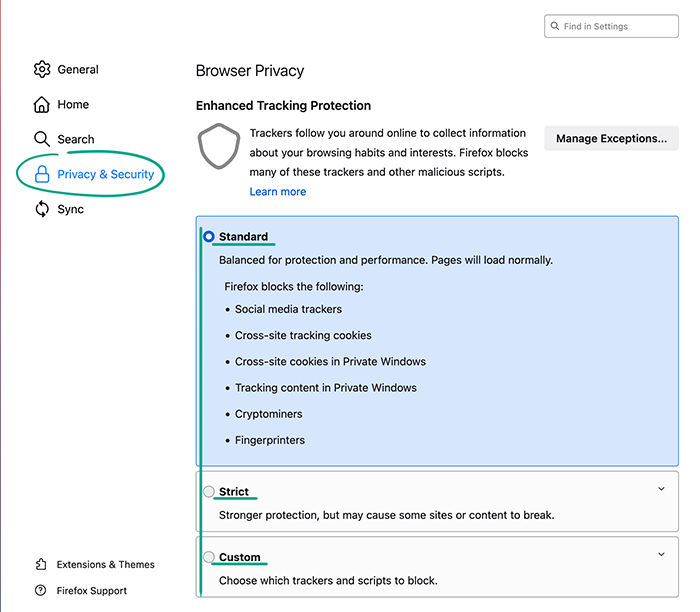
Bear in mind that blocking all cookies and trackers can stop some Web pages from functioning properly. Disable tracking prevention for such Web pages if you are sure they are safe:
- Tap the shield icon to the left of the address bar;
- In the drop-down menu, disable Enhanced Tracking Protection.
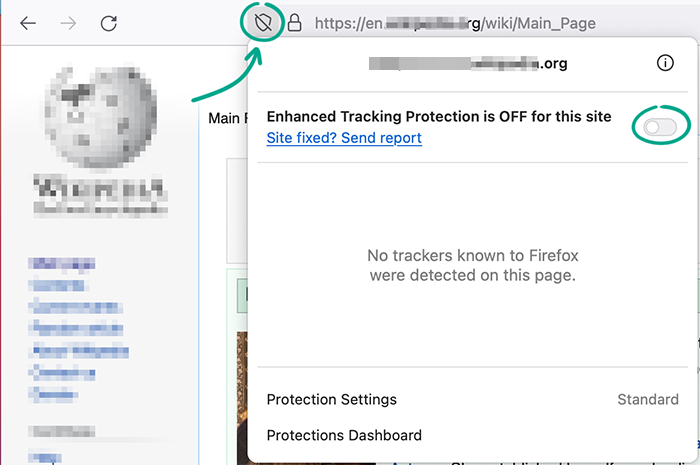
What for: To have the browser notify the website owner that you do not want to share information about your activities.
Your browser can notify websites you do not want to be tracked. Website owners do not have to react to it in any way, but many voluntarily stop storing the user's information after receiving this notification. By default, this feature is only enabled in private browsing mode. To use it all the time:
- Click the button with three parallel lines on it in the top right corner of the screen;
- Select Settings;
- Go to Privacy & Security in the menu on the left;
- Search for, or scroll down to, Send websites a "Do Not Track" signal that you don't want to be tracked, and select Always.

How to protect your data
open allWhat for: To protect against leaks.
When you sign in to a website, Firefox prompts you to save your login and password. This allows it to fill in your login credentials for you next time. By default, the browser regularly checks if any of your accounts have been affected by a leak or hack. To do this, it checks your credentials against a database of compromised accounts. Firefox will warn you if it finds you at the risk of being hacked.
To check your accounts:
- Click the button with three parallel lines on it in the top right corner of the screen;
- Select Settings;
- Go to Privacy & Security;
- Scroll to Logins and Passwords;
- Click Saved Logins;

- In the list on the left, you will see your credentials stored in Firefox. Affected accounts will be marked with a key sign;
- Click the account name and change the weak password to a strong and unique one. To learn more about the leak, click the link in the warning.
You will also see a warning if you visit a website affected by the leak, even if you haven't saved credentials for that website in Firefox.




